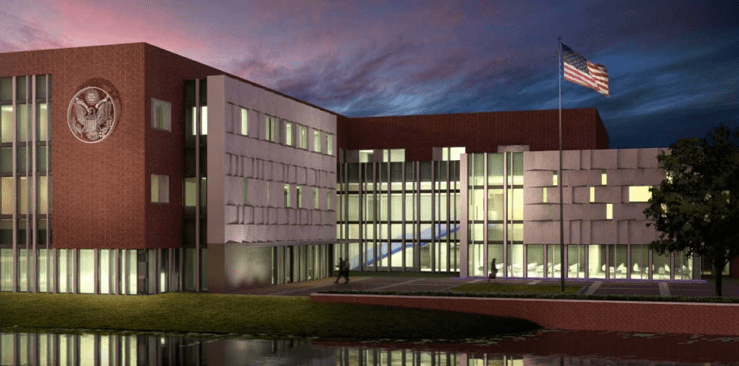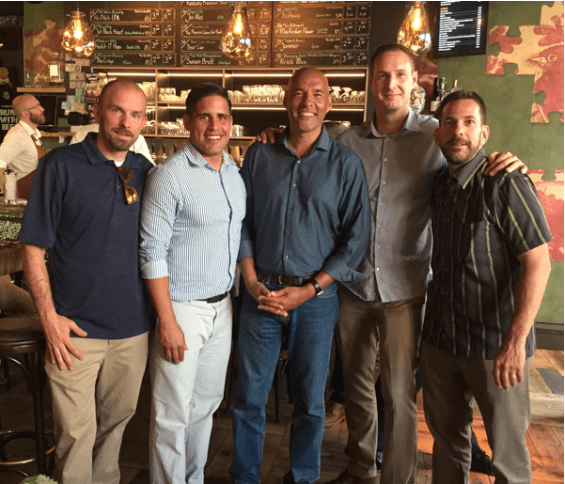This summer, I had the opportunity to intern in the Netherlands. I split my time working in the U.S. Embassy and an international law enforcement organization located in The Hague. Both of these organizations allowed me to gain a broader understanding of American foreign policy from both a bilateral and multilateral perspective.
I must admit, I was not very well versed on the history of U.S. relations with the Dutch prior my time here. Our relationship with the Netherlands dates all the way back to the American Revolution! On April 19, 1782, the Dutch accepted the credentials of John Adams who carried a copy of the Declaration of Independence to the Netherlands. They became the second nation to officially recognize American independence.
As a result, the Dutch are our oldest, continuous bilateral relationship. Our excellent relationship is based on close historical and cultural ties. We share similar positions on many important issues and work together both bilaterally and multilaterally in such institutions as the United Nations and the North Atlantic Treaty Organization. The Netherlands supports counterterrorism efforts and is a member of all 12 UN counterterrorism conventions. The Dutch also work closely with the United States on international programs against drug trafficking and organized crime.
This close relationship was clearly demonstrated during my time at the embassy, which recently moved to its new location at John Adams Park on January 29, 2018. It is no coincidence that the location is named John Adams Park since he officially established diplomatic relations over 235 years ago. This location is a fitting home for the U.S., Dutch, and foreign staff working to maintain and improve the longest peaceful, unbroken relationship the United States has with any country in the world.
Photo Credit: U.S. Embassy – Netherlands
One of the major highlights of my time at the Embassy was when Ambassadors Pete Hoekstra and Henne Schuwer signed the Chapeau Agreement on July 2, 2018 which stablished a framework for bilateral defense cooperation. This agreement strengthened cooperation between the Netherlands and the United States on military equipment and operations.
The agreement involved exchanging military personnel, such as pilots, liaison officers, and technicians, as well as exchanging information about new technological systems. This is especially important in large-material projects, such as the replacement of helicopters, the purchase of drones, or the exchange of information during submarines replacements. Both countries also agreed to cooperate further in missile defense.
Photo Credit: U.S. Embassy – Netherlands
International Law Enforcement Agency
The international law enforcement agency I worked at serves as the official law enforcement agency of the European Union. The goal of the organization is to achieve a safe Europe for the benefit of all citizens. This organization supports all 28 (soon to be 27) member states in their fight against terrorism, cybercrime, and other serious organized crime.There are also 13 third-party countries with liaison officers located at the agency.
The U.S. has representatives from the following agencies: Bureau of Alcohol, Tobacco, Firearms and Explosives (ATF), Customs and Border Protection (CBP), Drug Enforcement Administration (DEA), Diplomatic Security Service (DSS), Federal Bureau of Investigation (FBI), Food and Drug Administration (FDA), Immigration and Customs Enforcement (ICE), Internal Revenue Service (IRS), New York Police Department (NYPD), Secret Service (USSS) and the Transportation Security Administration (TSA).
The biggest security threats involve terrorism, international drug trafficking, money laundering, organized fraud, counterfeit currency, and human trafficking. The networks behind these crimes are quick to seize new opportunities and are resilient in resisting traditional law enforcement measures. It takes the efforts of all member states and third-country partners to help reduce the prevalence of these crimes.
To combat these threats, the agency established many individual centers to target specific threats; three of which I will discuss.
The first is the Counter-Terrorism Center, which is an operations center that serves as a hub of expertise in terrorism response. It is designed as a central hub in the fight against terrorism and provides operational support for investigations, identifies foreign fighters; shares intelligence and expertise on terrorism financing; identifies online terrorist propaganda; reduces illegal arms trafficking; and increases international cooperation among counter-terrorism authorities.
The CTC’s principal task is to provide operational support during investigations. The center can crosscheck live operational data, provide financial leads, and analyze details of an investigation to understand terrorist networks. The center can also provide a coordinated response in the event of a major terrorist attack.
The second is the Migrant Smuggling Center, which was established in 2016 after a period of highly irregular migration. These vulnerable migrants travelled largely unrestricted in large groups across the Mediterranean Sea into Europe. The MSC concluded that migrant travel was often facilitated by a criminal organization. These smuggling services often involved high risk sea crossing in overcrowded and unsafe vessels. Migrant smuggling quickly became a lucrative criminal enterprise that put many lives in danger.
Combatting this multi-billion-dollar trade became an essential response to the migrant crisis. Supporting authorities to coordinate highly complex cross-border anti-smuggling operations therefore became the primary objective of the MSC, which closely cooperates with its partner EU Agencies dealing with judicial cooperation and border management.
The final center is the Cyber-Crime Center, which was established in 2013 to strengthen the law enforcement response to cybercrime and help protect citizens, businesses and governments from online crime. The C3 has made a significant contribution to the fight against cybercrime as it has been involved in many high-profile operations and on-the-spot operational-support deployments resulting in hundreds of arrests. The center has also analyzed hundreds of thousands of files, the vast majority of which were malicious.
The C3 focuses on the following types of cybercrimes: cyber-dependent crime, online child sexual exploitation, and payment fraud. C3 serves as the central hub for criminal information and intelligence, supports operations and investigations, and provides a variety of strategic-analysis products that enable informed decision-making at the tactical and strategic levels on combating and preventing cybercrime. The center also provides a comprehensive outreach function connecting law-enforcement authorities with the private sector, academia, and other non-law enforcement partners. It also supports training and capacity-building and provides highly specialized technical and digital forensic support capabilities.
One of the most fascinating events I participated in this summer was Cyber Patrol. This was the second year the agency coordinated to counter criminals on the Darknet in a multi-disciplinary law enforcement manner. More than 40 investigators and experts investigated active targets and developed intelligence packages. As a result of this coordinated action, multiple suspects were identified, and these accounts were flagged by member states for investigation. Further actions at the national level are expected to be initiated against the identified targets.
This was a fascinating summer and I am extremely grateful to the Carlucci Family for this opportunity. This internship allowed me to broaden my perspective on U.S. Foreign Policy and National Security while also working with a group of fine individuals who went out of their way to accommodate my stay. I cannot say enough great things about the people I met on this journey, especially this fantastic crew below.



